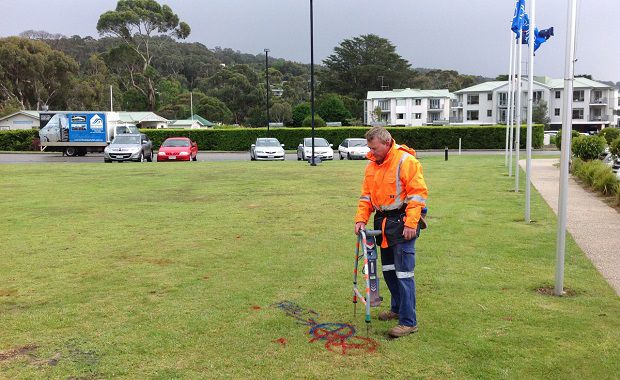Step-by-Step Underground Cable Fault Detection

Locating underground cable fault is much easier now than ever before. There are several methods and advanced detection techniques that make it easier to diagnose faulty underground cables to make your task easier. However, there is no single best method. It involves a series of steps and exemplary skills for precise and accurate fault finding, without damaging the cable.
Even a minute fault reduces the overall functionality of electrical cables and the entire setup. Furthermore, the situation worsens due to cable location, which is often difficult. As a result, there is no end to problems. The major challenge is to detect accurate underground cable faults through utilities.
Underground Cable Fault Finding: Steps Involved
#1: Sectionalizing
Sectionalizing is the most basic, destructive, and exhaustive method of underground cable fault finding. In this method, experts dig up the suspected location or property for detection, divide it into sections, cut it through, and inspect. There are series of steps involved in inspecting as well as testing each and every section for faulty cable detection. It may even damage the property.
#2: Thumping
Thumping is an innovative method compared to sectionalizing. In this technique, a high voltage, approx 25kV, is set up on an end of the cable and higher current arc is induced in the faulty cable. This is a better method of detection as an arc forms at the exact fault location. In addition, at high voltage, it causes a strong thumping sound audible even above the ground. It may also detect utility.
However, this method is not foolproof. There are certain disadvantages of this technique as well:
- Firstly, it is often difficult to access high voltage for medium and low priority testing. Even if surge generators are available, it is a cumbersome process.
- Secondly, the method is ineffective for longer length cables.
- Thirdly, there are obviously better methods available.
#3: Transmitter-Receiver Method
The method uses an AC generator that supplies signal current to underground pipes and utility. A receiver is used to detect electromagnetic fields from signal current. In certain circumstances, the transmitter contains relevant information related to the resistance capacity of the current circuit.
This method is effective in most of the circumstances of cable detection and fault finding.
#4: Time Domain Reflectometry
An easier method, also called the Pulse Echo Method, enables a tester to calculate the distance to changes in a cable. Introducing radio frequency pulse at one end along with an integrated timer calculates the frequency of travel along the length of the cable. When the frequency reflects, the timer stops.
In this method, there are certain standard values of different materials used for cable construction of different lengths. Using this information, a tester can detect any disparity based on time. Whenever there is a cable fault it changes the cable impedance, thereby affecting the ability to transmit pulses.
The information needed for accurate cable fault finding includes propagation velocity or the maximum distance displayed on TDR along with pulse width.
Final Word
Irrespective of the method applied for underground cable fault detection, accurate spotting is very important. Testers and engineers use sound amplifiers and microphones for better accuracy.
Author Bio: Jon Armstrong specialises in underground cable fault finding and detection. He ensures that you get accurate readings.
